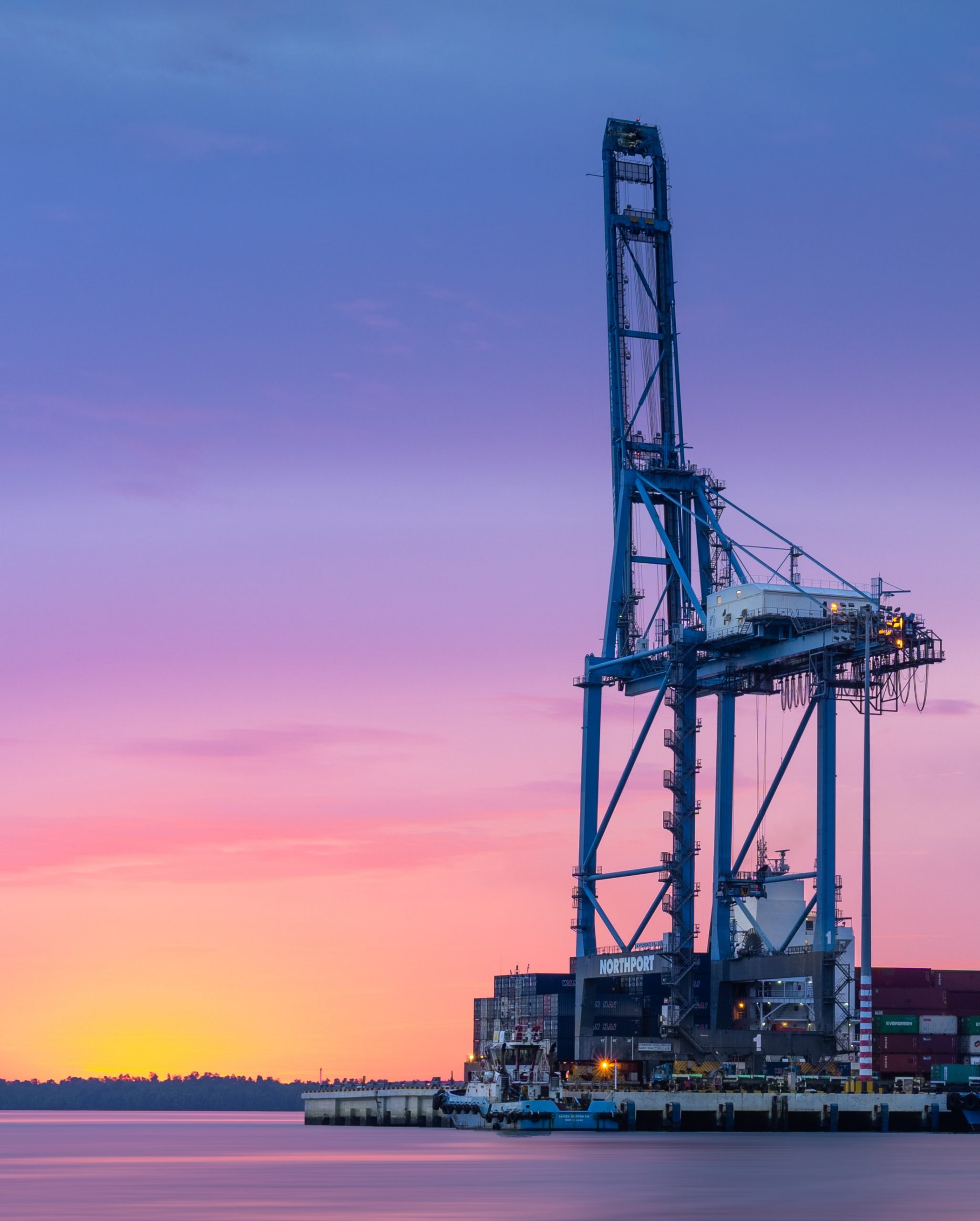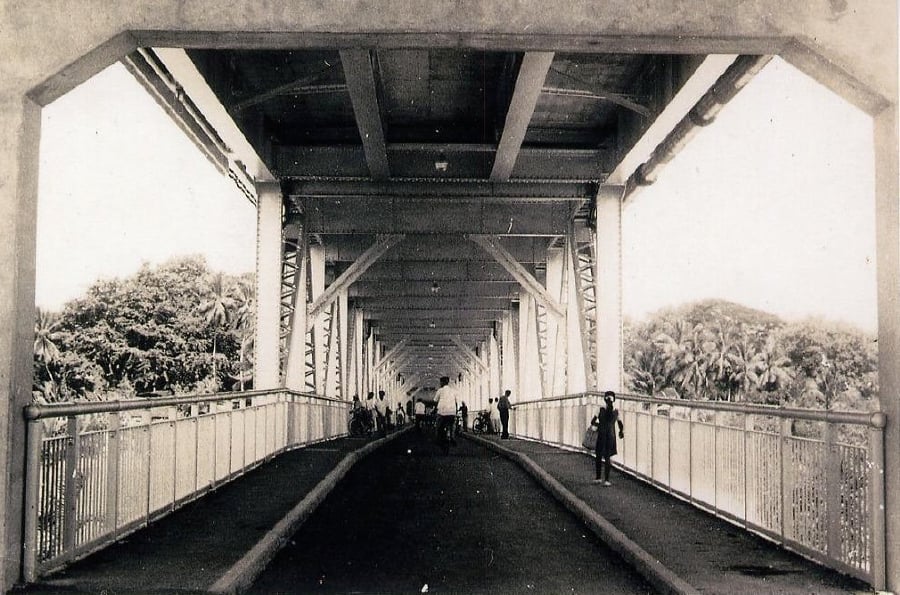

Klang’s priceless Kota Bridge
Published on November 22, 2019 | by nst.com.my

GAZETTING a national heritage goes beyond preserving its structure; it’s equally important to remember how it came to exist and the stories behind it.
Kota Bridge in the heart of the royal town here was the brainchild of the British administration after World War 2. It had wanted to construct a permanent steel suspension bridge to cater for folks travelling back and forth to the south and north of the town, said Selangor history researcher Faisal Surani.
“Before the war, there was the Belfield Bridge across Sungai Klang. A part of it had to be bombed by the British during the Japanese invasion. Unfortunately, repeated attempts to restore the bridge were unsuccessful.
“That led to the building of three bridges to replace Belfield — two pontoon bridges to cater for motorised vehicles and a suspension bridge for pedestrians — between 1945 and 1955. However, these bridges were exposed to the elements and many times would collapse. The British then decided it was time to have a safe, permanent bridge for the people.
“In 1951, the British commissioned the Crown Agents from London to send engineers to study the construction of a new bridge, one that is unique.
“Then, the idea of a dual-way double-decker steel bridge came about. Among the conditions were that it must be a solid structure, cost efficient and cut travelling time.

“That was how Kota Bridge was planned. Its upper deck would cater for motorised vehicles and the lower tier was for pedestrians, bicycles and trishaws. The construction of Malaya’s first double-decker reinforced steel girder bridge and the only one in Southeast Asia kicked off in June 1957.
“It was the biggest engineering project and a new technology in Malaya at that time, costing RM7 million. Construction materials were imported from England. Spanning 500m and 6.7m wide, it was built by British firm Dorman Long (Bridge and Engineering) Ltd, while Gammon Messrs (Malaya) Ltd conducted piling works.
“British engineers supervised the construction while the labourers were Malays, with some from China and India,” Faisal told the New Straits Times.
Faisal, a 52-year-old ex-teacher and former honorary secretary of the Malaysian Historical Society (Selangor Chapter), had been researching the rich history of Selangor for more than a decade.
Faisal said the discovery of a severed head near a pillar of the bridge in Sungai Klang almost halted the construction.
“The labourers were superstitious and they no longer wanted to work because they believed the foundation of the bridge was built using human heads. Construction was stopped for several weeks.
“The Public Works Department had no choice but to launch a campaign to let people know that the bridge’s foundation was made of cement and iron rods, and not human heads. Only then did construction resume.
“There was also an incident where a Chinese labourer was killed when he was crushed while working on the upper deck.
After Kota Bridge was opened, there were also cases of suicides.”
He said the bridge was supposed to be named Alam Shah Bridge, after the then Sultan of Selangor, Sultan Hisamuddin Alam Shah.
However, two weeks before the bridge was launched, Sultan Hisamuddin decided that it was to be called Kota Bridge, given its proximity to the then Bukit Kota Palace, which is near the current Klang Municipal Council.
“Sultan Hisamuddin launched Kota Bridge in 1959. Right after he cut the ribbons to signify its opening, his yellow Rolls Royce was the first vehicle to drive across it,” said Faisal.
Kota Bridge was the main artery that connected people from the north and south of the town, and also Port Klang. Three decades later, it could no longer cope with the growing traffic and the width of newly designed vehicles. There were also concerns about its stability.
Then came plans in the late 1980s to build another bridge that was wider and parallel to Kota Bridge.
“When plans for the new Kota Bridge were in the pipeline, the government realised that Kota Bridge was priceless and a decision was made by the Public Works Department to retain it.
“The Klang Municipal Council was given the responsibility to maintain it as a historical landmark. The upper deck was to be closed, but the lower deck would be opened to pedestrians and motorcycles.
“However, the north-end portion of Kota Bridge had to be torn down to make way for the new one, which was opened in 1992. Today, about 300m of the original Kota Bridge remain.”
Faisal said Kota Bridge has been nominated as a heritage site. It held a history of sorts not just from the construction point of view.
“Kota Bridge is close to the hearts of Klang folk. They used it to cross back and forth from their homes to the town centre those days, to the wet market, shopping areas and even tuition classes for children. It tells the vast stories of the people’s routine at that time.
“Kota Bridge remains an icon for Klang and being Southeast Asia’s only double-decker steel bridge, there is no need to say more.
“It still serves the people after so many decades, especially pedestrians, motorcycles and bicyclists,” said Faisal, who also revealed his plans to produce a coffee table book on Kota Bridge.
The Federal Government then bought the palace in 1957, to be converted into the Istana Negara. Since then it had undergone several renovations and extensions. But the most extensive upgrading was carried out in 1980, as it was the first time that the Installation Ceremony of His Majesty Seri Paduka Baginda Yang di-Pertuan Agong was held at the Istana Negara. Prior to this the Installation Ceremonies were held at the Tunku Abdul Rahman Hall in Jalan Ampang, Kuala Lumpur.
This majestic building is nestled within a serene and beautiful 11.34-hectare compound with a variety of plants and flowers, swimming pool and indoor badminton hall. It is located at Syed Putra Road right in the heart of the capital of Malaysia, Kuala Lumpur. The building has several halls for specific purposes such as the two main halls, the Throne Hall (Balairong Seri) and the Audience Hall (Dewan Mengadap) on the ground floor.
The whole area is fenced up and the Royal Insignia of His Majesty is placed on each steel bar between two pillars of the fence. At the front of the Istana Negara, there is the main entrance which resembles a beautiful arch. On each side of the arch, are two guard posts to shelter two members of the cavalry in their smart full dress uniform similar to the ones at Buckingham Palace, London.
As the palace grounds are not opened to members of the public or tourists, the Main Palace Entrance is a favourite picture spot for tourists.








